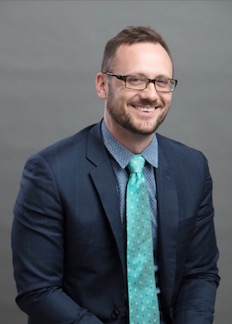
Post-acute providers often don’t have full visibility into what a patient’s care journey looks like prior to the patient entering their doors. A SNF may receive a relatively complete picture of the precipitating event and most recent hospital care—yet have no visibility into the patient’s complete medical history, much less details around appropriate care plans or their primary and specialty care providers.
The same thing happens at the other end of the patient’s rehab. Everything about the patient’s care has been well-documented, a care plan has been put into place that includes the patient following up with their PCP, the patient is discharged—and they disappear from the post-acute provider’s view.
In the weeks and months that follow, the post-acute care team can’t do much but wonder and hope for the best. Did the patient follow up with their PCP? How’s recovery going overall? Tough to say—but hopefully yes, and hopefully well.
This lack of visibility on both sides of patients’ post-acute stays is a problem for SNFs and other post-acute care organizations, and it creates negative consequences for patients—fragmented care plans post-discharge, lack of follow-up and intervention, preventable care delays and even avoidable readmissions.
By leveraging technology and other best practices, post-acute organizations can prevent these negative consequences while simultaneously strengthening care coordination and referral relationships with hospitals and health systems.
Here’s how our team at Legacy Healthcare addressed this challenge and improved care and outcomes.
Finding a platform that fits with day-to-day realities
Some new technologies seem exciting at first glance, but in practice they require adding new workflows or activities simply to support the technology, rather than for any real clinical or operational benefit. So our team prioritized finding a solution that could leverage the work our staff was already doing and enrich current workflows with more relevant information—rather than adding one more system to monitor or one more set of tasks to an already long list.
Then we took a hard look at what would work for our patients’ other providers—the PCPs, specialists and hospital care teams that saw our patients both before and after their stay in our facilities. This was a critical step, as it ensured we didn’t go too far down the decision-making path only to find we were vetting options that wouldn’t work for one or another key entity. It also helped narrow the field, as there simply aren’t that many solutions in the market today that work well for all provider types.
We further narrowed our options by prioritizing more sophisticated capabilities. We didn’t just want to be able to search for information after the patient arrived at one of our facilities—we wanted it automatically provided ahead of time for planned admissions and automatically populated for all patients. We didn’t just want a way to access information on the patient’s care post-discharge—we wanted to be notified immediately if one of our patients presented to an ED so that we could intervene and direct patients back to our facilities when appropriate.
Ultimately, one option checked all the boxes: PatientPing, a national care coordination network that connects healthcare providers with real-time clinical event notifications during transitions of care and significant clinical events. We have leveraged this technology along with quality improvements and best practices to remove the blinders from post-acute care transitions and the guessing game that happens post-discharge.
Results so far
Prior to implementing the new platform, figuring out who a patient’s PCP was or determining whether they had seen a specialist was both tedious and time consuming. Now, we’re able to see this information days before the patient is admitted to our facilities, putting us ahead of the game. We’re able to plan ahead for LOS expectations and post-discharge follow ups, making the patient’s stay much smoother.
We’ve also strengthened our relationship with hospitals. Because we’re notified when a patient presents to the ED post-discharge, we are able to engage with them in real time when a patient may not need to be admitted and can come back to receive care at our facility—which is a more efficient use of healthcare resources and prevents unnecessary hospital readmissions.
When we receive alerts on our discharged patients who present to the ED, we often perform what we call “wellness checks”, where we send someone from our facility to drive to the ED and check in on the patient.
In one instance, we sent a liaison to a nearby hospital to check on a patient who had been sitting in the ED for more than six hours with her husband. The liaison learned that the patient did not feel well and wasn’t operating well at home. The liaison then informed the patient that she was able to come back to our facility to receive care for no additional cost to the couple. We were able to set her up with transportation back to our facility, where she received rehab services for a week in the comfort of our SNF. In this case, the patient was unaware of her care options and went to the ED to receive support. We were able to avoid a costly, unnecessary hospital admission and also provide continuous support to the patient and her family.
Having the right information at our fingertips has also helped us hit our target benchmarks, enhance our financial and operational performance, stay ahead of our competition and provide better care to our patients.
A
Erik Iverson is VP of Business Development at Legacy Healthcare located in Skokie, IL. Legacy Healthcare provides skilled nursing, rehabilitation and specialized services to patients across 32 facilities throughout the Chicagoland area, as well as in Utah and Montana.




